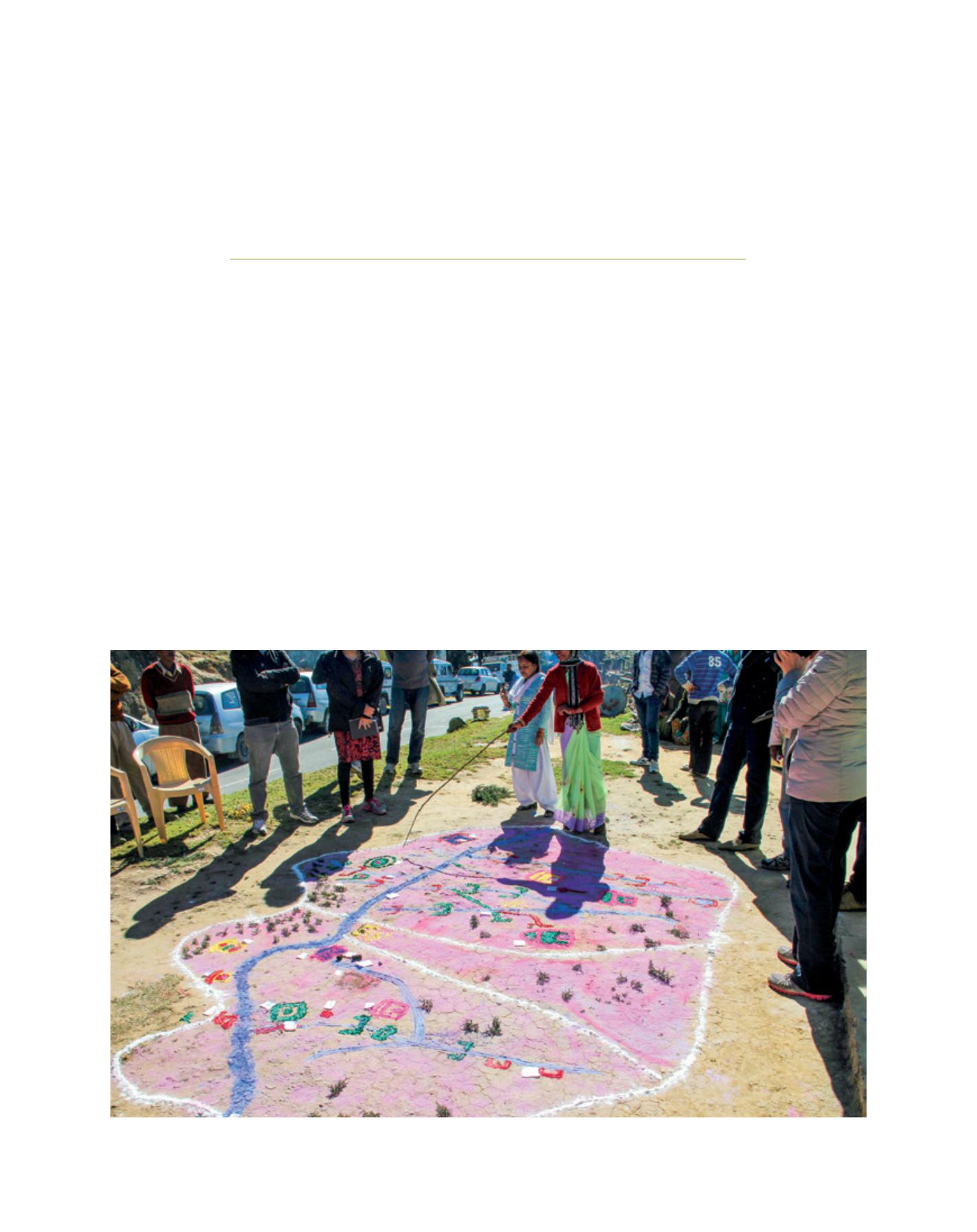

[
] 101
The Uttarakhand Sustainable Land
and Ecosystem Management project —
applying integrated approaches
Mohamed Imam Bakarr, Jean-Marc Sinnassamy, Ulrich Apel,
and Andrew Chilombo, The Global Environment Facility
T
he Global Environment Facility (GEF) funded
Uttarakhand Sustainable Land and Ecosystem
Management (SLEM) project was linked to a
US$70 million World Bank aided decentralized watershed
management (UDWDP) with an additional government
contribution of almost US$17million.
The UDWDP was designed to improve the productive potential
of natural resources and increase incomes of rural inhabitants
in selected watersheds through socially inclusive, institution-
ally and environmentally sustainable practices. This foundation
for integrated management of natural resources in the water-
sheds served as a basis for the Uttarakhand SLEM project.
The GEF project aimed at the comprehensive treatment of
watersheds to restore and sustain ecosystem functions and
biodiversity while simultaneously enhancing income and
livelihoods. GEF resources were specifically targeted on 20
micro-watersheds, all of which were selected based on severity
of erosion, extent of poverty, and lack of infrastructure facili-
ties. The project generated valuable lessons learned on how
the environment and natural resource issues can be effectively
integrated across watersheds and how demonstrated success
can be scaled up and mainstreamed at state and national levels.
The Uttarakhand SLEM project used various approaches
and participatory processes toward building ownership at
multiple levels — from development and management of
Image: 0 Patrizia Cocca/GEF
A resource map in Katna, India: community participation is knowledge-sharing and is key to SLEM project interventions
L
iving
L
and
















